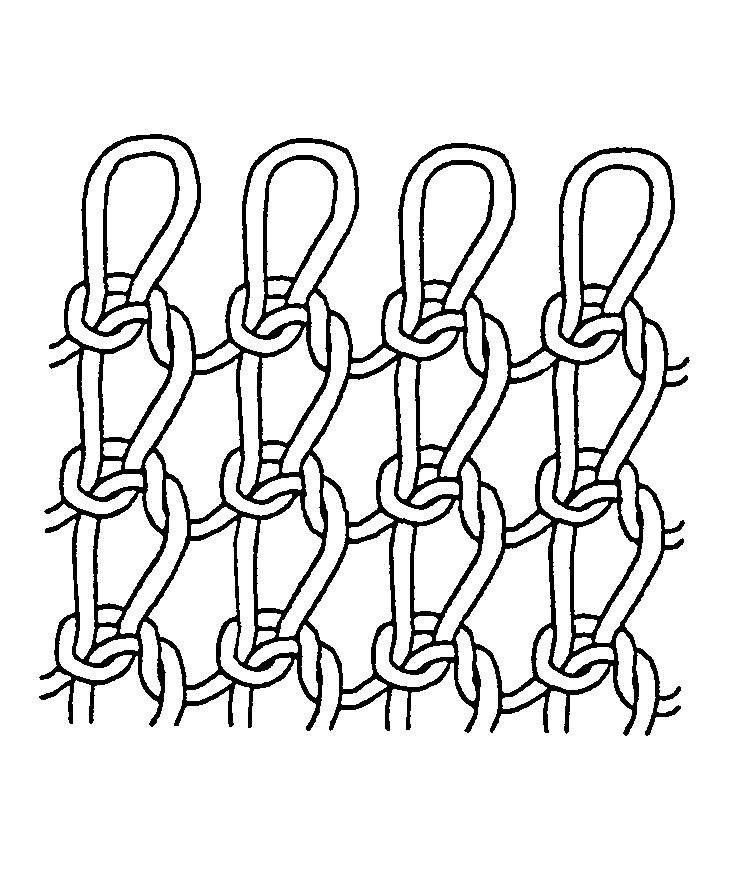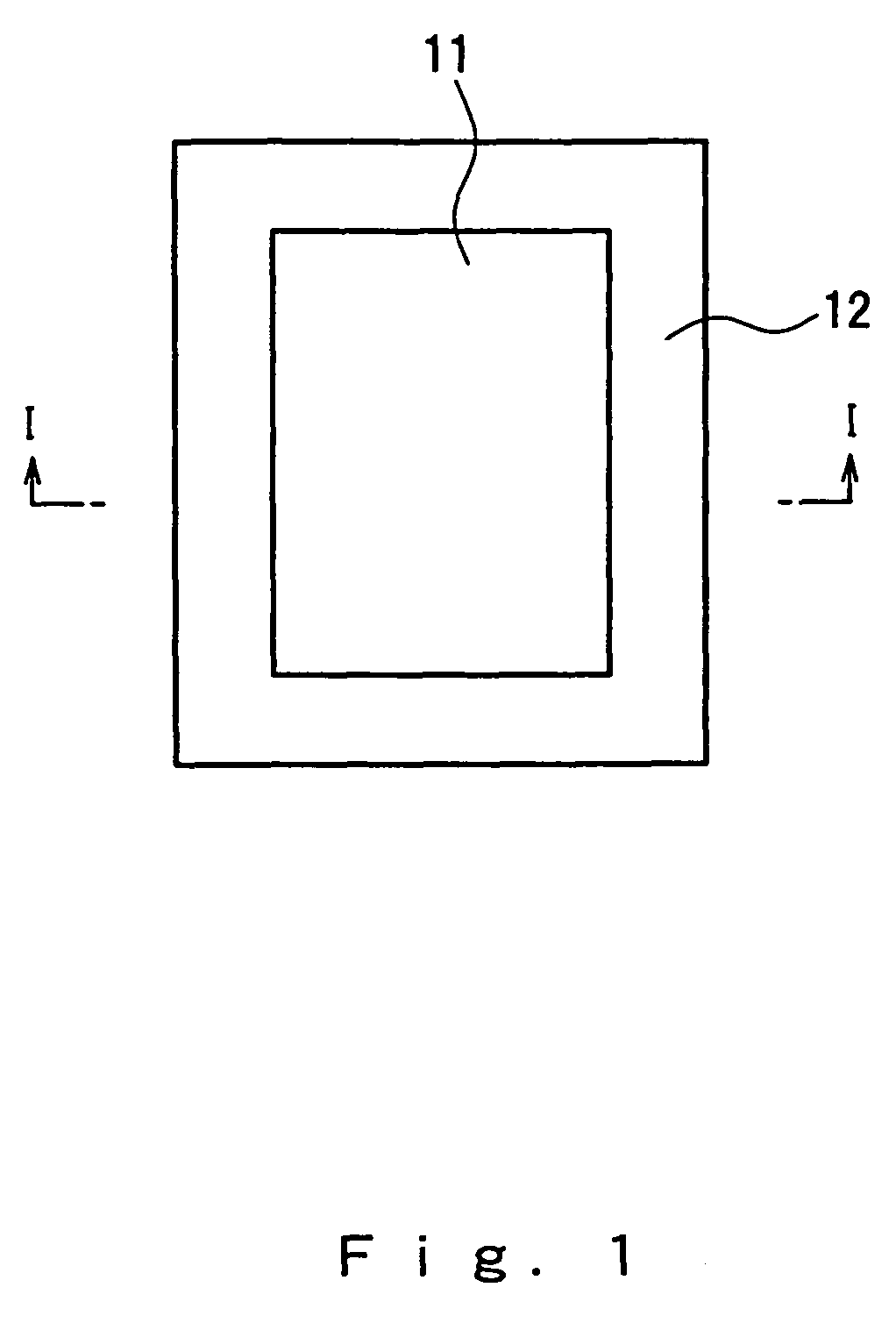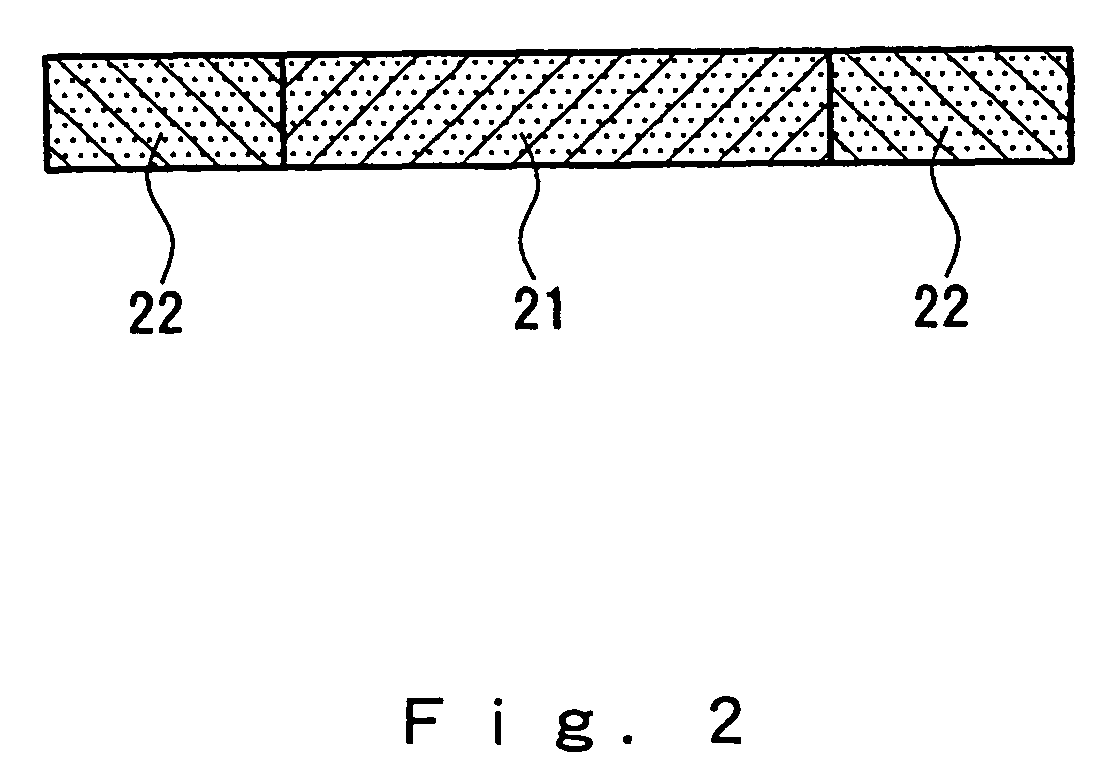Antiadhesive material
- Summary
- Abstract
- Description
- Claims
- Application Information
AI Technical Summary
Benefits of technology
Problems solved by technology
Method used
Image
Examples
example 1
Manufacture of Nonwoven Fabric-1
[0095]A nonwoven fabric was prepared using poly-L-lactic acid having a weight-average molecular weight (MW) of 950,000 as a material, by melt blowing using a general-purpose small extruder with a screw diameter of 20 mm. A melt blow die was composed of 126 nozzles (150 mm width) with a nozzle diameter of 0.3 mm. Air in a hopper was purged using nitrogen gas, and spinning was carried out at a nozzle temperature of 250° C. By adjusting a discharged amount using a gear pump as well as a speed of a belt conveyer so as to control a laminated amount, two kinds of nonwoven fabrics, that is, a nonwoven fabric A (density: 20 g / m2, thickness: 200 μm), and a nonwoven fabric B (density: 35 g / m2, thickness: 350 μm) were manufactured. These nonwoven fabrics were subjected to vacuum drying at 105° C. for 20 hours, so that residual monomers were removed and the crystallization was promoted.
Manufacture of Nonwoven Fabric-2
[0096]A nonwoven fabric was prepared using L-l...
example 2
Comparative Example 2
[0105]Antiadhesive materials (Examples 2-1 to 2-10) were prepared using reinforcing materials shown below, and functions thereof were evaluated. As Comparative Example 2, the same gelatin film as that of Comparative Example 1 was used, and the same evaluation was carried out. Fabric bodies used as reinforcing materials and methods for manufacturing the antiadhesive materials are shown below. It should be noted that each reinforcing material was cut into a rectangular shape of 9 cm in a lengthwise direction and 7 cm in a width direction, and an internal part (7 cm in the lengthwise direction and 5 cm in the width direction) was cut away, so that the reinforcing material in a rectangular frame shape such that each side portion had a width of 1 cm was used (outer dimensions: 9 cm×7 cm, inner dimensions: 7 cm×5 cm).
(A) Method for Manufacturing a Fabric Body
1. MB Nonwoven Fabric
[0106]In the same manner as that in the aforementioned “manufacture of nonwoven fabric-1” ...
example 2-1
[0113]The MB nonwoven fabric, which was cut, was placed on a petri dish of the same kind as that of Example 1, and 10 wt % gelatin solution was cast thereon so that the fabric is impregnated with the gelatin solution. Then, it was subjected to air drying as it was, so that the nonwoven fabric and the gelatin film were integrated with each other. This complex was cut so as to have a margin of the nonwoven fabric with a width of 5 mm at each side, and both surfaces were subjected to cross-linking by projecting ultraviolet rays using a sterilization lamp (manufactured by Toshiba Corporation, GL-15, wavelength: 254 nm, power of UV lamp: 15 W, irradiation distance: 45 cm) for 10 hours each. The complex thus obtained was used as an antiadhesive material.
PUM
| Property | Measurement | Unit |
|---|---|---|
| Length | aaaaa | aaaaa |
| Length | aaaaa | aaaaa |
| Time | aaaaa | aaaaa |
Abstract
Description
Claims
Application Information
 Login to View More
Login to View More - R&D
- Intellectual Property
- Life Sciences
- Materials
- Tech Scout
- Unparalleled Data Quality
- Higher Quality Content
- 60% Fewer Hallucinations
Browse by: Latest US Patents, China's latest patents, Technical Efficacy Thesaurus, Application Domain, Technology Topic, Popular Technical Reports.
© 2025 PatSnap. All rights reserved.Legal|Privacy policy|Modern Slavery Act Transparency Statement|Sitemap|About US| Contact US: help@patsnap.com



